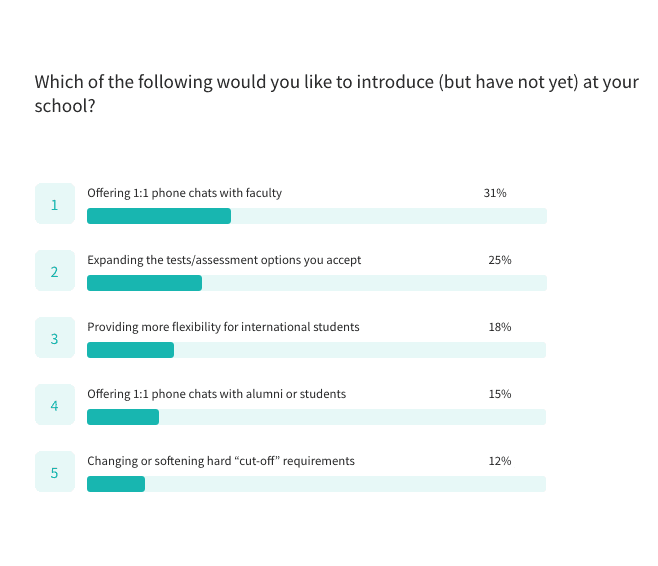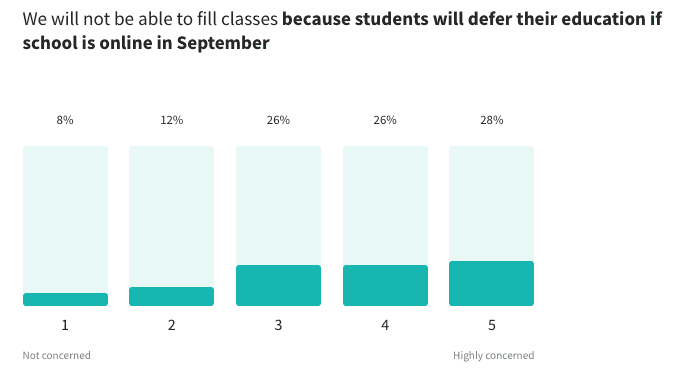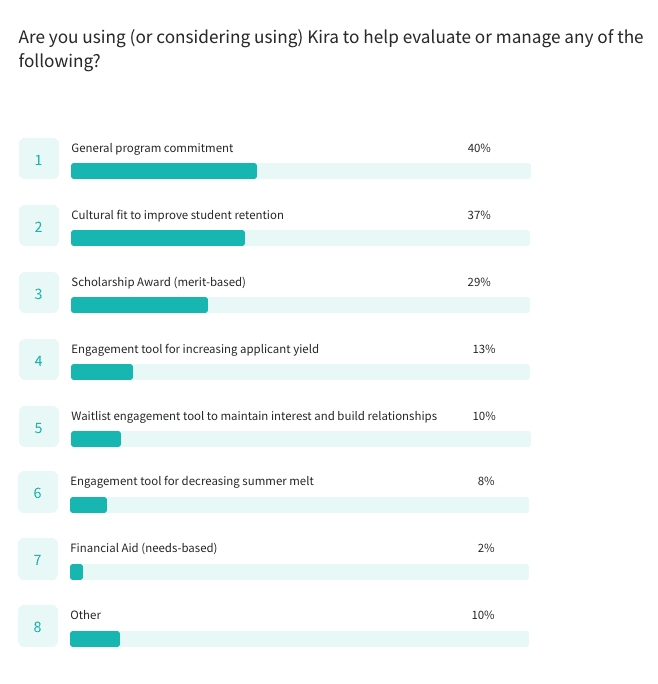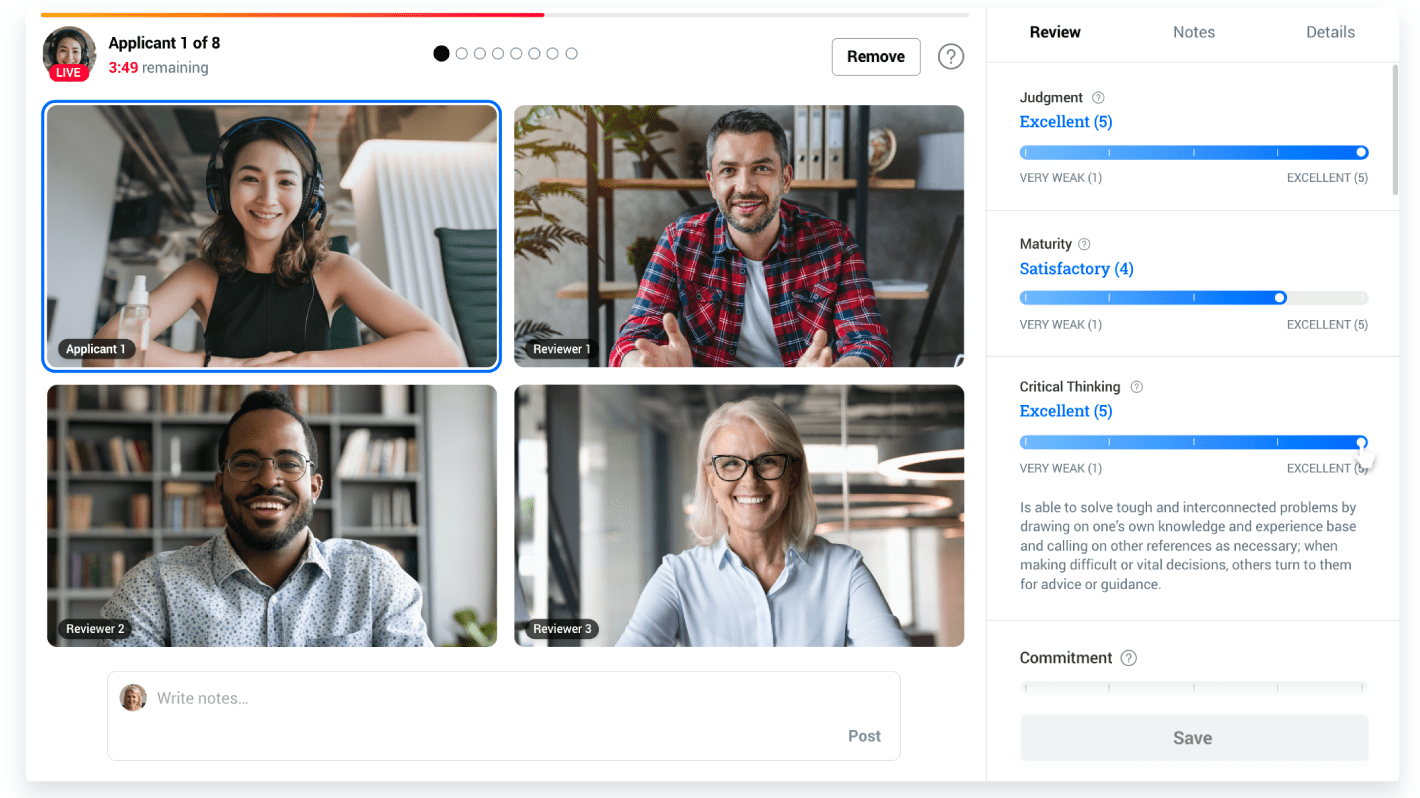After last year’s scandal, the world of admissions and enrollment expected a shake-up in 2020.
And it was shaken. But by something far bigger than the scandal.
The global coronavirus pandemic has changed nearly everything about our lives including our admissions and enrollment processes.
We asked 250 schools about their admissions teams’ response to COVID-19. We asked admissions professionals about their concerns, their fears, and their tips for getting through this time. 50 representatives from admissions teams responded to our survey. 83% of respondents hailed from North America, 13% from Europe, and 5% represented schools in Asia.
Here’s the report on admissions in a pandemic.
Report on Remote Admissions
Changes in practices and processes
Far and away, the biggest change admissions teams have adopted this cycle was to extend deadlines. 81% of the admissions professionals we surveyed extended their deadlines for at least one phase of their admissions process.
Beyond extending deadlines, more than half of respondents have made at least one other change, including more flexibility for international students, one-on-one phone chats with candidates, and optional deferrals.
You can see the breakdown of new practices schools have introduced below:

Only two respondents indicated that they have made no changes due to COVID-19 to their admissions process.
Admissions’ wishlist for further changes
When asked what they’d like to see change, 32% of respondents were hoping to see phone chats between candidates and faculty members added to their school’s response to the virus.
A quarter of schools indicated that expanding flexibility around tests and assessment options is needed.

Concerns about next year
Unsurprisingly, the number one concern on admissions teams’ minds right now is filling classes.
More than half of the participants expressed worries that they would not be able to fill their classes due to travel restrictions (58% concerned), uncertainly about financial commitments (54% concerned), or students deferring their enrollment if their program is online come September (54% concerned).


62% of admissions teams indicated they were concerned about their inability to predict yield and melt.

Top challenges in the admissions office
When asked an open-ended question about their teams' biggest challenge right now, our respondents left a wide range of responses. The top themes included enrollment and yield management, dealing with the uncertainty of the pandemic, and student visa issues.

On the bright side, the large majority of respondents expressed less fear about losing their own jobs (16%) or their team members being reduced (30%) due to lay-offs or reassignment.
Right now, it seems, admissions teams have even more work than they already did!

Usage of the Kira Talent platform
Survey participants who use the Kira Talent platform had a variety of different reasons for using Kira during this time. The most common responses were improving retention, ensuring program commitment, and rewarding scholarships.

9 tips from admissions officers on tackling work from home
To wrap up our survey, we asked for tips and tricks on working in admissions at this strange time. Unsurprisingly, our admissions community came through with so many great suggestions.
1) Stay in touch with your team
“Find ways to keep connected with your team. Take an hour each week (every other) to break away from work and "hang out". Play a game, talk about life, break up the monotony.”
“Meet with your peers frequently via Zoom or instant messaging.”
“Create a faculty community in the online space. Have weekly team meetings.”
Looking for some help connecting with your team?
Check out Jackbox Games for virtual silliness, this how-to article to make your own team trivia night, and a bunch more virtual activities.
2) Double down on personalization
“Connect with the candidates, this is always true, but even more so now. Meeting one on one when possible is great, most of all, personalize because everyone is feeling the social distance. Connecting even remotely and reducing cultural distance and creating a sense of proximity is key for recruitment at the present time.”
“Offer virtual coffee chats."
“Have video calls with incoming students to help relieve stress about the situation.”
With more and more students considering the possibility of deferral in the fall, every candidate connection counts for filling your class next year.
3) Listen and be flexible to students’ needs
“Communicate extensively with your pool of applicants and also listen to applicants' needs. Provide flexibility and options.”
“Our Recruitment Officers are reaching out to all newly admitted students who to date have not confirmed their admission and trying to help in any way they can.”
“The key this year will be maintaining quality standards while offering as much flexibility as possible. It’s critical to assess all parts of the application holistically.”
“Flexibility in platforms, not everyone can use Skype or Zoom.”
More than ever before, applicants who may not meet all requirements need to be considered on a case-by-case basis.
We recently heard from a candidate who had completed a portion of their application from a parking lot where they could connect to wireless internet.
Considering an applicant’s context is critical.
Read: "How to Consider Context and Intersectionality in Admissions."
4) Be proactive on COVID-19 updates & communications
“Maintain updated instructions and FAQs related to COVID on a main webpage to decrease repeat questions from applicants.”
“Keep informed on updates so students can be provided with answers.”
If you’re personally finding COVID-19 news overwhelming, that’s completely understandable.
Open up a discussion with your colleagues to see if you can take turns owning COVID-19 communications across alternating days and weeks.
5) Have fun with technology
“If you're using Zoom like many are, find fun virtual backgrounds to add variety to your day.”
Opening a Zoom meeting with a fun background can definitely be a great icebreaker. Canva has some great templates to create your own Zoom background, whether you want to create a mood for a meeting or show of your campus!
6) Make a schedule for the day (and don’t skip your breaks)
“Plan out your hours. Plan free time to relax or do sports.”
“Set clear hours of work. It's easy to work all day because of convenience.”
“Try to adhere to your normal schedule as much as possible. That includes dressing nicely for work and taking scheduled breaks. This will help maintain routine and normality during this unique time.”
(No comment on pairing sweatpants with a suit and jacket though.)
Many of us make a schedule for the day, but we’re quick to work through our breaks and lunches to make up time on other projects.
In the moment it feels like a good idea, but those brain breaks help you be more creative and productive in the long run!
7) Set up your space
“Use dual monitors and, if working with a laptop, get a Bluetooth keyboard and mouse. Get comfortable.”
“Make sure your equipment is working properly before any meetings.”
For most of us in higher education, home isn’t a primary workplace.
If you have been using an “alternative” desk set up, you’re most likely feeling the back and neck pain already. Here are some stretches for relieving that working-from-home pain.
8) Move around – and don’t forget to blink!
“Get up every 20 minutes, create a schedule, don't forget to blink. Take care of yourself.”
Worldwide Google search queries about “eye strain” are up nearly 100% compared to this time last year, and even, six months ago.
9) Above all, take care of yourself and your families!
“Make sure you don’t neglect your mental health”
“Find the right balance with work/personal life in the same place - a typical day no longer runs straight through; there might be big pauses where you're managing your children, feeding them, helping them with their online school work.”
“Find a dependable source of beer and use it extensively :)”
This experience has been really hard for each of us in different ways.
Please, take care!
All of us at Kira can’t wait to see you soon.
About the study:
This study was conducted by the team at Kira Talent in May 2020. Data were collected anonymously in the form of a survey sent to a variety of Kira's academic admissions partners. Participants were given a list of multiple-choice and open-ended questions about their admissions processes. It was completed by fifty participants.



